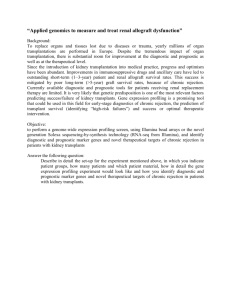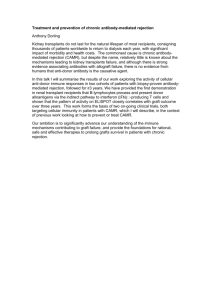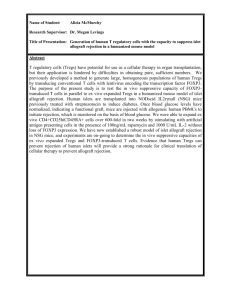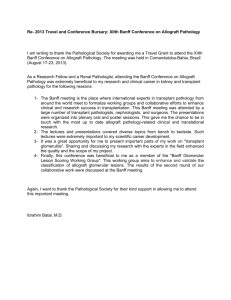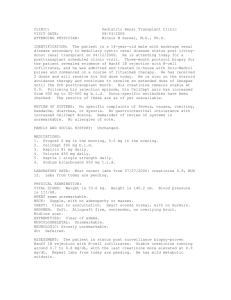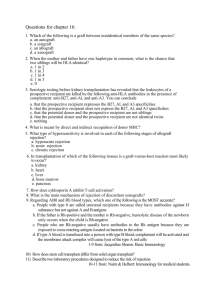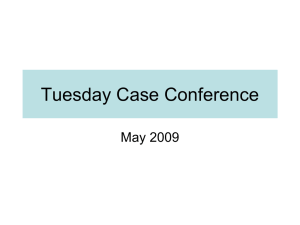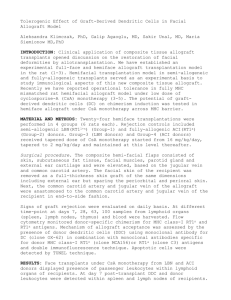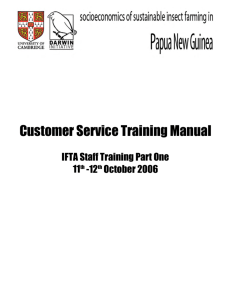histological spectrum of chronic allograft dysfunction in renal
advertisement
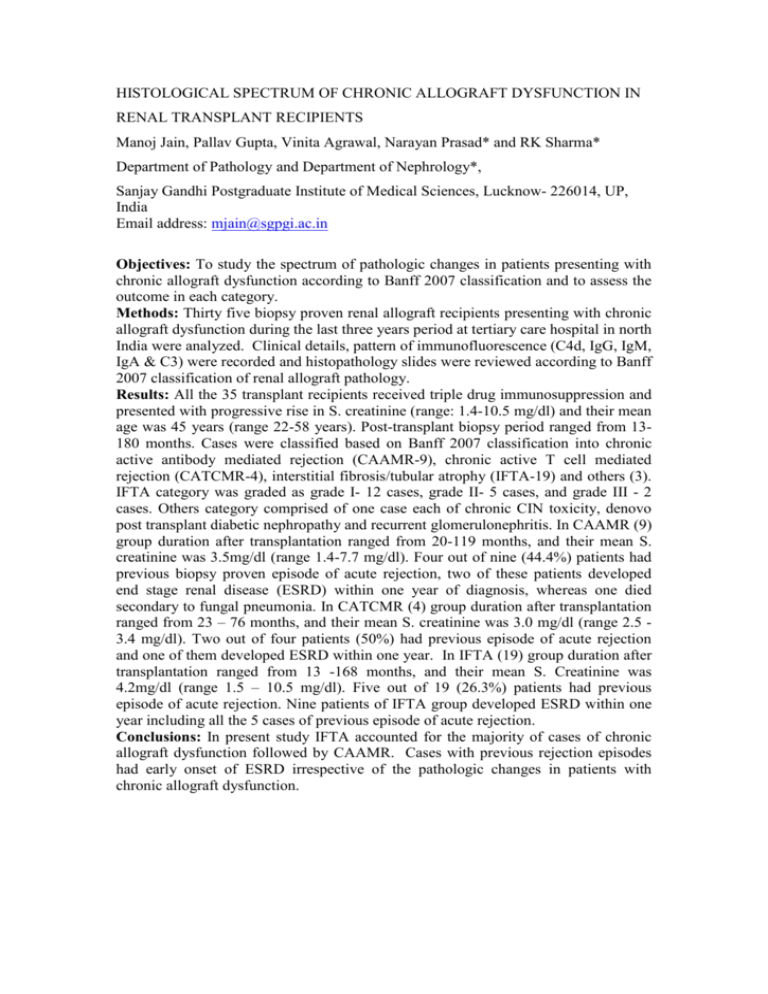
HISTOLOGICAL SPECTRUM OF CHRONIC ALLOGRAFT DYSFUNCTION IN RENAL TRANSPLANT RECIPIENTS Manoj Jain, Pallav Gupta, Vinita Agrawal, Narayan Prasad* and RK Sharma* Department of Pathology and Department of Nephrology*, Sanjay Gandhi Postgraduate Institute of Medical Sciences, Lucknow- 226014, UP, India Email address: mjain@sgpgi.ac.in Objectives: To study the spectrum of pathologic changes in patients presenting with chronic allograft dysfunction according to Banff 2007 classification and to assess the outcome in each category. Methods: Thirty five biopsy proven renal allograft recipients presenting with chronic allograft dysfunction during the last three years period at tertiary care hospital in north India were analyzed. Clinical details, pattern of immunofluorescence (C4d, IgG, IgM, IgA & C3) were recorded and histopathology slides were reviewed according to Banff 2007 classification of renal allograft pathology. Results: All the 35 transplant recipients received triple drug immunosuppression and presented with progressive rise in S. creatinine (range: 1.4-10.5 mg/dl) and their mean age was 45 years (range 22-58 years). Post-transplant biopsy period ranged from 13180 months. Cases were classified based on Banff 2007 classification into chronic active antibody mediated rejection (CAAMR-9), chronic active T cell mediated rejection (CATCMR-4), interstitial fibrosis/tubular atrophy (IFTA-19) and others (3). IFTA category was graded as grade I- 12 cases, grade II- 5 cases, and grade III - 2 cases. Others category comprised of one case each of chronic CIN toxicity, denovo post transplant diabetic nephropathy and recurrent glomerulonephritis. In CAAMR (9) group duration after transplantation ranged from 20-119 months, and their mean S. creatinine was 3.5mg/dl (range 1.4-7.7 mg/dl). Four out of nine (44.4%) patients had previous biopsy proven episode of acute rejection, two of these patients developed end stage renal disease (ESRD) within one year of diagnosis, whereas one died secondary to fungal pneumonia. In CATCMR (4) group duration after transplantation ranged from 23 – 76 months, and their mean S. creatinine was 3.0 mg/dl (range 2.5 3.4 mg/dl). Two out of four patients (50%) had previous episode of acute rejection and one of them developed ESRD within one year. In IFTA (19) group duration after transplantation ranged from 13 -168 months, and their mean S. Creatinine was 4.2mg/dl (range 1.5 – 10.5 mg/dl). Five out of 19 (26.3%) patients had previous episode of acute rejection. Nine patients of IFTA group developed ESRD within one year including all the 5 cases of previous episode of acute rejection. Conclusions: In present study IFTA accounted for the majority of cases of chronic allograft dysfunction followed by CAAMR. Cases with previous rejection episodes had early onset of ESRD irrespective of the pathologic changes in patients with chronic allograft dysfunction.
